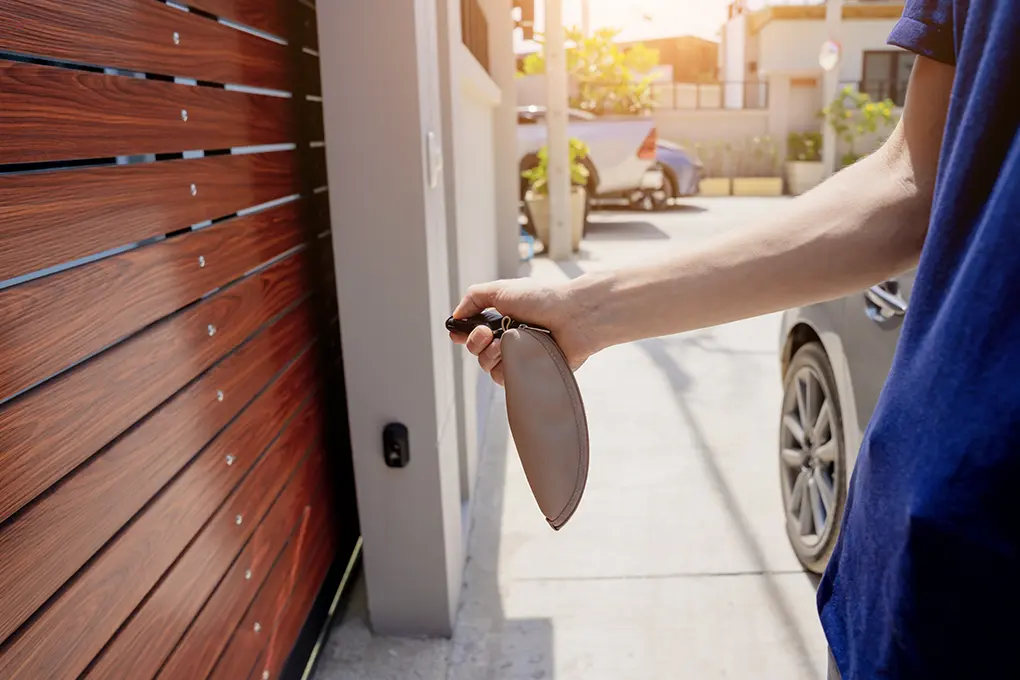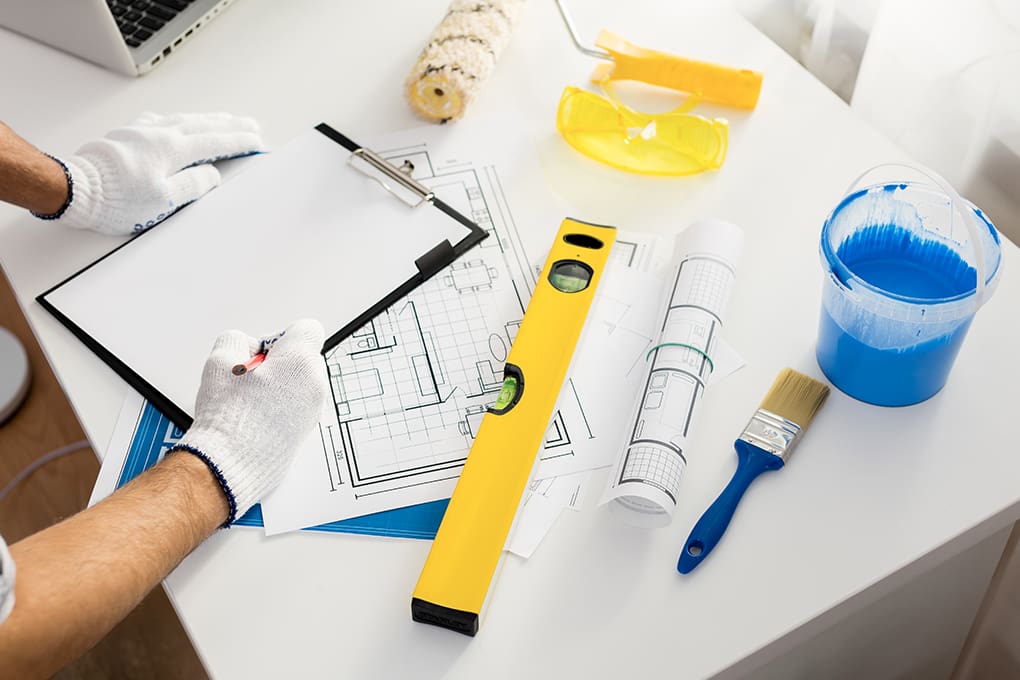Think your garage is safe just because the door is closed? Think again. Garages are one of the most targeted access points during home burglaries, yet they often get the least attention when it comes to security. If you’ve ever wondered how to secure your garage or need a serious plan for garage break-in prevention, this guide is your wake-up call.
With around 9% of all home burglaries starting in the garage, protecting this space is essential. From high-value tools and bikes to easy access into your home, garages are goldmines for intruders. But here’s the good news: with the right strategies, you can turn your garage into a dead end for would-be thieves.
Let’s talk about what really works to keep your space locked down and your peace of mind intact.
Table of Contents
- Key Takeaways
- Why Garages Are Prime Targets for Burglars
- 6 Common Garage Vulnerabilities
- Essential Physical Security Measures
- Lighting and Visibility Solutions
- Surveillance and Monitoring Systems
- Smart Technology Integration
- Additional Security Layers
- Maintenance and Regular Testing
- Protect Your Garage with Expert-Recommended Security Solutions
- Frequently Asked Questions
Key Takeaways
- Around 9% of all home burglaries start in the garage, often during the daytime when visibility is low.
- Weak locks, outdated openers, and exposed windows are major vulnerabilities burglars exploit.
- Reinforcing garage doors, side service doors, and windows adds vital layers of physical security.
- Smart garage door openers with rolling code tech and remote access help monitor activity in real time.
- Motion-activated LED lighting and strategic light placement deter intruders and improve visibility.
- Regular testing, seasonal adjustments, and software updates keep all garage security systems working properly.
- Visit Batten to find expert-vetted security gear and start protecting your garage with confidence.
Why Garages Are Prime Targets for Burglars
To protect your garage effectively, it’s important to understand why burglars are drawn to them in the first place. Garages often combine valuable contents with weaker defenses than the main home, creating an ideal target for opportunistic thieves.
Daytime Break-Ins Are Common
Most garage burglaries happen during daylight hours while homeowners are away. With less foot traffic in residential neighborhoods mid-day, criminals can act without drawing much attention. Garages are also more likely to be left partially open or unlocked during the day, especially in warmer months or in homes where the garage doubles as a workspace.
High-Value Items Are Easy to Grab
The types of items stored inside also make garages high-value targets. Power tools, electric lawn equipment, bicycles, camping gear, and fitness equipment are common and easy to grab. Many of these items are expensive to replace and easy to resell without raising suspicion.
Hidden Access to the Main House
Another common mistake is leaving keys, garage door remotes, or even wallets and purses inside unlocked vehicles. Burglars often check glove boxes or center consoles looking for anything that might provide access to the main house or additional valuables.
Workshops and Electronics Attract Thieves
In some cases, garages house electronics, backup generators, or valuable workshop materials. Thieves know they can get in and out quickly without needing to breach the main home, especially if interior garage doors are left unlocked.
Older Smart Tech May Invite Digital Threats
Even smart homes aren’t immune. Some older smart garage systems are vulnerable to signal capturing or brute-force attacks, especially if the homeowner hasn’t updated their firmware or changed the default settings.
Garage Security Should Match the Rest of Your Home
To outsmart burglars, you’ll need to take these risks seriously and treat your garage with the same level of security as the rest of your home. The good news is that with layered protection and smart habits, your garage can go from easy target to locked-down stronghold.
6 Common Garage Vulnerabilities
Garage security is frequently underestimated, yet it’s a known weak spot that burglars often exploit. Below are six vulnerabilities that can compromise your garage and increase the risk of break-ins.
Weak Locking Mechanisms
Many older garage doors are fitted with basic locks that can be bypassed using screwdrivers, pliers, or even wire hangers. Some overhead doors lack interior slide locks or manual deadbolts, leaving them easy to lift from the outside. Reinforcing these locking systems is essential for better protection.
Unsecured Side Service Doors
Side entry doors are often equipped with standard doorknob locks that aren’t reinforced with deadbolts or strike plates. Without upgrades like a solid-core door, metal reinforcement, or a high-security deadbolt, these entry points are easily kicked in or pried open.
Exposed Garage Windows
Windows on garage doors or walls provide visual access to tools, bicycles, and vehicles. Burglars often use this visibility to decide if a garage is worth targeting. Uncovered or non-frosted windows can also reveal if someone is home based on visible lights or movement.
Outdated Remote Openers
Older garage door openers that rely on fixed codes are susceptible to code grabbing or brute-force scanning. Without rolling code technology or encryption, these devices can be compromised by inexpensive tools found online.
Remotes Left in Vehicles
Leaving a remote clipped to a sun visor or console in a parked car creates an easy opportunity for theft. If a burglar gains access to the vehicle, they can use the remote to open the garage and potentially enter the home.
Poor Outdoor Lighting
Garages surrounded by dim lighting or shadows provide the perfect cover for burglars. Motion-sensor lights, overhead floodlights, and perimeter illumination make it more difficult for criminals to approach unnoticed, especially during long winter nights.
Essential Physical Security Measures
Garage break-ins often start with a weak link in your physical security setup. In this section, we’ll walk through two key areas to focus on: reinforcing doors and entry points, and upgrading to modern garage technology.
Reinforcing Doors and Entry Points
Strengthening garage entry points is the first line of defense. Let’s take a closer look at how to secure overhead doors, side doors, and garage windows.
Secure the Overhead Garage Door
The garage door is often the first target for break-ins. For standard overhead or swing-up doors, a manual slide bolt or garage door lock can stop most intruders in their tracks. These interior locks cannot be accessed from outside, which prevents forced entry even if the exterior handle is compromised.
Upgrade the Side Service Door
Side service doors are another common vulnerability. Many garages have side doors with basic knob locks that can be pried open in seconds. Replacing these with a quality deadbolt and reinforced strike plate, installed with three-inch screws that anchor into the frame, greatly improves resistance to forced entry.
Protect Garage Windows
Garage windows should not be overlooked. Clear glass allows thieves to scope out tools, bikes, or even spare keys. Frosted or tinted windows keep your valuables out of sight. For added protection, apply a shatter-resistant security film that makes glass harder to break without drawing attention.
Smart Garage Door Openers and Technology
Once your physical barriers are strong, it’s time to add a smart layer of protection. These tools give you better control, alerts, and automation. Here’s what to look for in a modern garage opener.
Use Rolling Code Technology
Technology can add a second layer of protection. Modern garage door openers use rolling code encryption, which changes your remote’s signal every time you open the door. This stops criminals from using scanners or cloned remotes to gain access.
Install Smart Openers with Remote Access
Smart openers can also connect to your home Wi-Fi, giving you alerts when the door opens or closes. Some models let you operate the door remotely from your phone, making it easy to double-check if you left it open or close it from anywhere.
Enable Smart Security Features
Features like scheduled closing timers, auto-lock functions, and vacation modes add extra protection during long absences. For the best performance, make sure your opener is correctly configured with your home network and the app you use to control it.
Lighting and Visibility Solutions
Lighting is one of the most effective deterrents against garage break-ins. Criminals rely on shadows and low visibility to stay unnoticed. This section focuses on two important ways to improve garage visibility: motion-activated lighting and strategic light placement.
Motion-Activated Lighting Systems
Motion-activated lights are a simple but powerful addition to your garage security setup. Let’s review how they work and which types are best suited for different home setups.
Choose the Right Lighting Type
Modern LED motion lights offer reliable, bright illumination and long service life. Hardwired models provide consistent power, while solar-powered or battery-operated units are perfect for renters or detached garages without direct access to wiring. Both options help light up vulnerable access points and send a clear warning to anyone lurking nearby.
Adjust Sensitivity and Coverage
To make motion lights effective, set them to detect human movement while avoiding false triggers from pets or wind-blown branches. Aim for a duration setting that keeps lights on for three to five minutes, long enough to deter intruders without bothering neighbors. Lights should cover all approach routes, including the main garage door, side entrances, and windows.
Strategic Placement and Coverage
Beyond motion detection, proper placement of your lighting makes all the difference. This section walks through how to use floodlights and spotlights to eliminate hiding places and maximise visibility.
Install Floodlights for Broad Coverage
Floodlights work well for wide driveways, detached garages, or backyard setups. When installed at elevated corners, they cast a wide glow over large areas, removing cover for anyone trying to sneak around. Choose models with adjustable heads to direct light precisely where it’s needed.
Use Spotlights to Target Entry Points
Spotlights are ideal for specific zones like service doors, rear windows, or corners shielded by shrubs or fences. These fixtures focus illumination where it matters most and pair well with cameras or smart sensors.
Integrate Lighting With Your Security System
Connecting your garage lighting to your home security system provides seamless control. With the right setup, you can activate lights remotely, set automatic timers, or sync them to motion alerts from other parts of your property. This unified system adds an extra layer of protection and convenience.
Surveillance and Monitoring Systems
Installing a garage security camera system is one of the most effective ways to deter theft and capture crucial evidence. In this section, we’ll cover how to choose the right cameras and use sensor technology to keep your garage protected 24/7.
Camera Selection and Placement
Choosing the right type of camera is key to effective garage surveillance. Here’s how to pick the best models and place them where they’ll offer the most protection.
Find out how much money you can save on home insurance premiums by getting a security system for your home.
Use Outdoor-Rated, Night Vision Cameras
Cameras intended for garage security should be weather-resistant and offer high-definition recording. Models with infrared night vision are especially useful since most garage break-ins occur in the dark or low light. Clear visibility at night gives you a major advantage if you need to identify faces or license plates later.
Position Cameras for Dual Coverage
Attached garages benefit from a camera that monitors both the garage interior and the door leading into your home. This setup captures footage of intruders before they reach your main living space. For detached garages, install cameras that cover exterior walls and nearby access points, including windows and side doors.
Mount Cameras at Optimal Height
The best height for garage cameras is typically between 8 to 10 feet. At this level, you get a clear angle on faces while reducing the risk of tampering. Cameras mounted too high may miss important details, while low-mounted devices are easier to disable or obscure.
Sensor Integration and Alerts
Sensors add real-time intelligence to your garage monitoring setup. When combined with your cameras, they help you respond quickly to suspicious activity and capture more useful footage.
Install Garage Door and Window Sensors
Sensors installed on your main garage door, side door, and any accessible windows provide instant alerts when they’re opened unexpectedly. These alerts can be configured to trigger your cameras, allowing you to record activity as soon as it starts, not after.
Connect Sensors to Smart Alerts
By integrating sensors with a mobile app or home hub, you can receive real-time notifications. These systems keep you informed if the garage door opens during unusual hours or if a window is tampered with. For added peace of mind, some systems also offer automatic video uploads when an alert is triggered.
Consider 24/7 Professional Monitoring
If you’re frequently away from home or prefer not to rely solely on phone alerts, choose a system with professional monitoring. These services contact you and dispatch emergency responders if suspicious activity is detected. They serve as a reliable safety net in case you’re unable to check an alert in time. Find out if you need professional monitoring right here.
Smart Technology Integration
Smart home systems have reshaped how homeowners secure their garages. This section covers how connected security setups and mobile controls can increase your response time and improve garage break-in prevention.
Connected Security Systems
Using smart home devices in your garage allows you to stay informed and take immediate action when something seems off. These tools work together to create a layered defense that’s more responsive than traditional alarms.
Use Systems with Multiple Components
Smart garage systems often include door sensors, motion detectors, cameras, and alarm triggers. These tools operate in sync to provide consistent monitoring and instant alerts. They can also distinguish between normal access and suspicious activity, reducing false alarms while maintaining security.
Track Access by Family Members
Some systems allow you to track garage access by user, which is helpful for families with multiple drivers. Knowing who opened the garage and when can help identify patterns and spot irregular behavior.
Sync Devices for Automated Responses
Linking garage security with other smart devices creates coordinated responses to threats. For instance, you can program indoor lights to turn on or have your phone receive instant alerts when motion or forced entry is detected after hours.
Remote Monitoring and Control
Managing garage security from your smartphone puts control in your hands no matter where you are. This setup is especially helpful for frequent travelers, business owners, or parents juggling unpredictable schedules.
Monitor Your Garage from Anywhere
Smartphone apps provide live camera feeds, sensor updates, and notifications about activity around your garage. Some systems even allow you to open or close the garage door remotely, which can be useful if someone forgets to shut it before leaving. The Ring 8-piece home security system offers comprehensive coverage that can be adapted for garage security applications.
Protect Valuable Tools and Equipment
For people who use their garage as a workspace or store expensive gear, remote monitoring is critical. It gives you peace of mind knowing you can check on your tools at any time and respond quickly if anything seems suspicious.
Additional Security Layers
Beyond smart tech and physical deterrents, a few extra steps can reinforce your garage’s overall security. In this section, we’ll cover inventory control, item concealment, and neighbor involvement.
Inventory Management and Concealment
Staying organized and discreet about what’s stored in your garage can prevent it from becoming a target in the first place. Here’s how to do it effectively.
Keep a Visual Inventory of Valuables
Take photos of your most valuable tools and equipment and record serial numbers. This documentation can support insurance claims and help law enforcement identify and recover stolen items.
Use Safes and Lockable Cabinets
High-value items should be kept in fireproof safes or secure storage cabinets inside the garage. These barriers not only slow down a thief but can also protect from fire or water damage.
Avoid Putting Items in Plain Sight
Position expensive tools or electronics so they’re not visible through garage windows. Keeping the space tidy and concealing high-value items can discourage thieves from attempting a break-in.
Neighborhood Awareness and Communication
Personal connections in your community can serve as an extra set of eyes when you’re away. Many theft attempts are stopped or reported thanks to alert neighbors.
Build Trust with Neighbors
Neighbors who recognize your routines are more likely to notice unfamiliar activity. Letting them know when you’re out of town or expecting deliveries can help them watch out for anything suspicious.
Join Local Security Networks
Many communities have neighborhood watch groups or apps that track and report local crime. Joining these platforms helps you stay informed and gives you a space to report or discuss garage-related security issues.
Coordinate Emergency Plans
In areas affected by storms, wildfires, or flooding, neighbors can support one another by sharing updates and assisting with emergency plans. This collaboration can be particularly useful when security systems are offline or disrupted during a crisis.
Maintenance and Regular Testing

Even the most advanced garage security systems lose their effectiveness if they’re not properly maintained. This section walks through essential upkeep tasks that keep your setup reliable all year long.
System Testing and Updates
Regular checks and timely updates are the foundation of an effective garage security system. These routines help you catch issues before they become vulnerabilities.
Test Sensors, Lights, and Alerts
Perform monthly tests on motion lights, cameras, and door or window sensors. Make sure lights activate with movement, cameras are recording properly, and alerts are being received on your phone without delay. Trigger door and window sensors manually to verify that they send immediate notifications.
Stay on Top of Battery Life
Battery-powered devices like motion detectors and sensors should be checked often. While many systems include low-battery alerts, manual checks prevent gaps in coverage. Also, test any battery backups during brief power outages to confirm they’ll work when needed.
Keep Software Up to Date
Smart garage systems rely on software to stay secure. Manufacturers release updates that patch vulnerabilities and improve performance. Enable automatic updates if possible, or check the app regularly to apply them manually.
Seasonal Adjustments
As the weather changes, your garage security setup may need a few small tweaks to stay effective. This is especially true in regions with harsh winters or hot, active summers.
Adapt Equipment for Cold or Hot Months
In winter, adjust motion light sensitivity to account for snow, wind, or freezing rain that might trigger false alarms. In summer, be mindful of foliage that may block cameras or lighting. Trimming back bushes or repositioning devices can restore full coverage.
Protect Outdoor Equipment
Secure external cameras, lights, and sensors against extreme temperatures and weather damage. This includes using weather-resistant mounts, protecting wiring, and keeping spare batteries inside in case of power loss.
Clean Lenses and Sensors
Dirt, spider webs, and moisture buildup can interfere with camera lenses and motion sensors. A quick wipe every month or two keeps your devices functioning as they should and improves video clarity and response times.
Protect Your Garage with Expert-Recommended Security Solutions
Garage break-ins are more common than most homeowners realize, but they’re far from inevitable.
From understanding the key vulnerabilities to installing physical reinforcements, upgrading lighting, adding surveillance, and integrating smart tech, you now have a full set of tools to protect one of your home’s most frequently targeted spaces. Keeping your garage secure means combining solid hardware, real-time monitoring, and consistent maintenance.
A smart, layered approach to garage break-in prevention makes a clear difference. Don’t wait until it’s too late.
Ready to fortify your garage against break-ins? Browse Batten’s curated selection of home security products – from smart sensors and cameras to lighting solutions – and start building the comprehensive protection your garage deserves.
Frequently Asked Questions
What Type of Garage Door Is Hardest to Break Into?
Solid steel garage doors with internal locking mechanisms are among the most secure. Pairing these with slide bolts or deadbolts, especially on manually operated doors, adds extra resistance to forced entry. Sectional doors with reinforced panels and no external handles are also less prone to tampering.
Should I Cover My Garage Windows to Prevent Theft?
Yes, garage windows should be frosted, tinted, or covered with security film to obscure visibility. Keeping valuables out of sight prevents burglars from assessing whether your garage is worth targeting. Curtains or blinds can work, but film offers added protection against glass breakage.
Can I Use My Garage Security System if I Rent?
Absolutely. Many smart garage security devices are renter-friendly and don’t require permanent installation. Battery-powered motion lights, peel-and-stick sensors, and plug-in cameras provide solid protection without damaging walls or requiring hardwiring. Just be sure to remove your equipment before moving out.
What Should I Do if My Garage Remote Gets Stolen?
Immediately disable access through the stolen remote by resetting your garage opener. Most models allow you to erase stored remotes and re-pair new ones. Change entry codes and notify household members to avoid unauthorized access until the system is resecured.
Are Smart Garage Openers Safe from Hacking?
Modern models using rolling code encryption are far more secure than older fixed-code openers. Still, it’s important to update firmware regularly, use strong Wi-Fi passwords, and disable remote access if your phone is lost or compromised to prevent digital breaches.
Do Garage Security Cameras Need Professional Installation?
Not always. Many garage security cameras are designed for DIY setup and include step-by-step instructions. Wireless models often connect via Wi-Fi and require basic mounting. However, for multi-camera systems or hardwired setups, hiring a pro may ensure optimal positioning and functionality.




